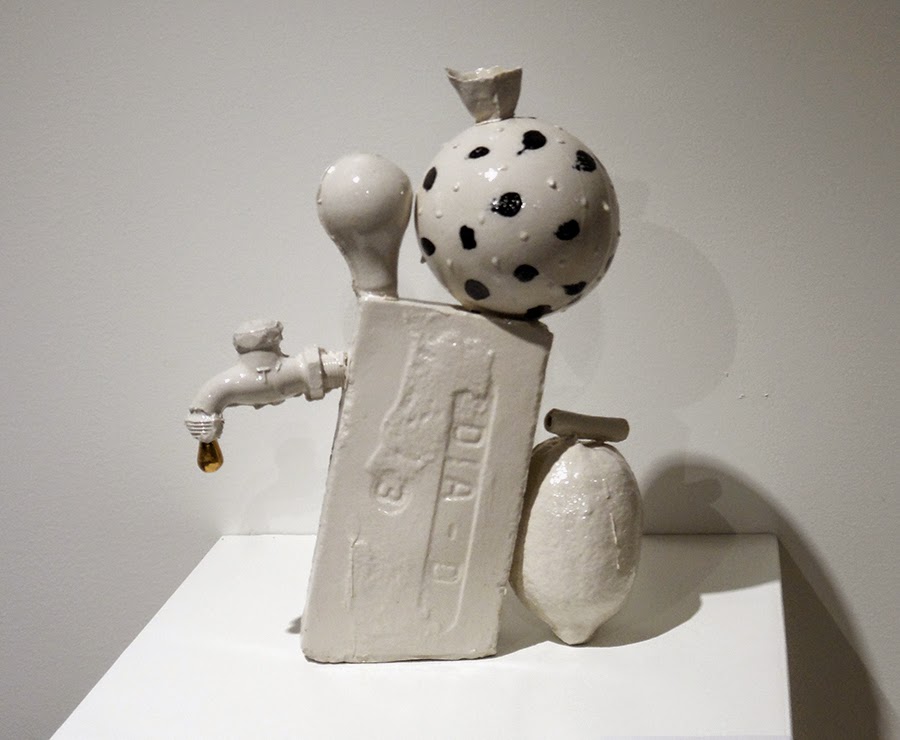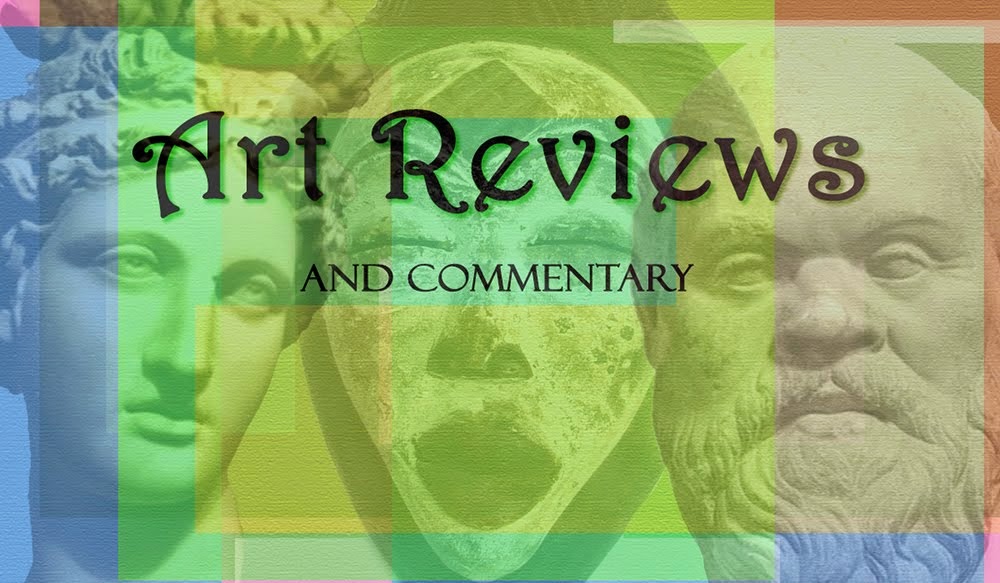Kim notes a programmatic aspect of Casting Plus: "This exhibit has an added dimension of
launching a new curriculum for Art Entrepreneurship to help fine art majors add
skills for making a living in art related businesses. These classes do not help you learn art quicker; we want our students to be able to make a living as artists and designers. Four year university education generally does not
include the business end as an artist."
Joe Nalven: How should we think about ceramics?
Yoonchung Kim: Ceramics is a medium that can
combine sculptural and painterly art works, but at the same time ceramic
outcomes depend on firing and glazing. Glaze and underglaze include many
chemicals for colorants. Ceramic requires many types of equipment for firing and
glaze making. Other sculpture works also require a variety of equipment, like saws, drills, welding, and casting equipment. We are fortunate that we have
been getting some advanced equipment with our new building.
For this exhibition, I included artists who use CNC (Calibrated Nozzle Changers), 3D printer for the shapes and laser printer or color laser printer for the surface imageries. These technologies also help the making of multiples faster - which is the way the casting technique is mostly used.
For this exhibition, I included artists who use CNC (Calibrated Nozzle Changers), 3D printer for the shapes and laser printer or color laser printer for the surface imageries. These technologies also help the making of multiples faster - which is the way the casting technique is mostly used.
 |
| Richard Burkett / California Drought Tea Pot / Soda fired slip-cast porcelain / 2014 |
YCK: In Asia, ceramic casting is a big part of university education. In the U.S., we emphasize the one of kind, the fine and conceptual ceramic piece. Bringing more of the Asian approach to our institution was what I planned before I went on sabbatical to Korea and China for a year. I learned many technical casting techniques while I was sharing the studio with an artist who has worked casting works for 25 years. In return, I taught image transfer techniques including silkscreen and decal making. My work is always about conceptual approaches with casting techniques; that was part of what I taught when I was in Korea.
Casting Plus: International
Ceramic Exhibition
Current
work by 15 artists from US, Korea & China
City Art Gallery: San Diego City College
1508
C Street, San Diego CA (Street parking nearby)
Gallery
hours: Tuesday, Wednesday,
Friday: 12 noon to 4 pm
Thursday:
3 to 7 pm, and by appointment
Oct.
7 - Nov. 4, 2014
Free
Contact: Yoonchung Kim: ykim@sdccd.edu
|
 |
| Mikyung Kim / Stoneage Ware / Porcelain 2014 |
 |
| Terri Hughes-Oelrich / Untitled / Slip-casted clay in molds |
 |
| Nancy Selvin / Findings #010 / Clay 2010 |
 |
| Yoonchung Kim / Frozen Perspective |
YCK: A common thread I had in most of my work are time as a visual element and the scale beyond human perception. The eternal time span of Earth compared to human life and the incredible size of nature compared to the human scale make my existence and art making temporal and humble.
I am fascinated with nature's lasting power and vastness; this is manifested strongly in my works. The eternal enormity of the Alaskan glaciers, powerful ocean and its waves dwarf me. Vast dried earth and sands cleanse me. When I am with nature, I find myself peaceful and spiritual.
Many things in my life have evoked a thought of death as the moment of returning to a primal element such as earth's dust.
Geometric forms from the man made environment are combined with natural forms and organic textures. Harmony is created in contrast: nature versus human, mortal versus immortal, object versus primal element.
 |
| Yoonchung Kim / J's Memory |
I am re-defining the concept of human scale and time from a different perspective.
Sometimes the meaning of my work may be ambiguous to the viewers, but I encourage the viewers to have their own interpretation of my works. I believe they will relate my works with their own views of life. As Marcel Duchamp said, "The viewer completes the creative cycle."
It doesn't seem that the field of ceramics is static. There seems to be a dynamic energy driving this show -- not only in the vision, but the materials and technology.
Is this what we are seeing?
The artists in the exhibit are: Jin Baek, Leslie Baker, Richard Burkett, Seung Hee Lee, Soonjung Hong, Terri Hughes-Oelrich, Jeff Irwin, Jihye Kim, Mikyung Kim, Yoonchung Kim, Nancy Selvin, Hae Sin Ro, Paula Winokur, Seung Wook Hwang, Sol Yoon.
The images shown in this blog are only a sample of the robust collection of pieces. Each one is worth seeing in this world class exhibit.






